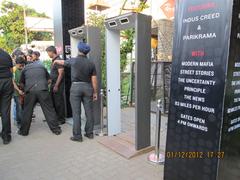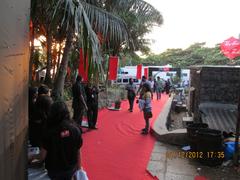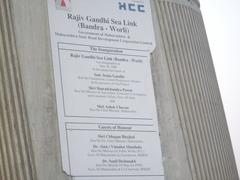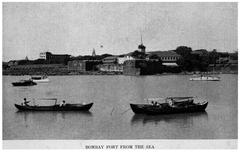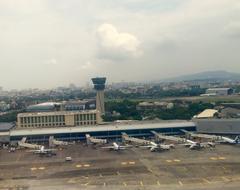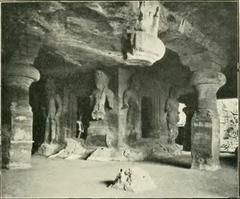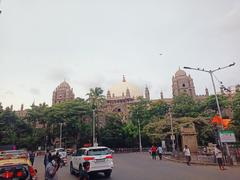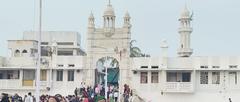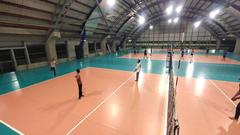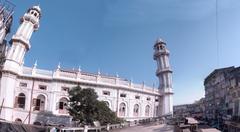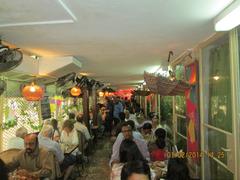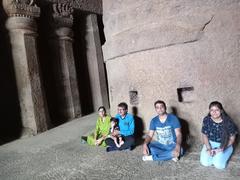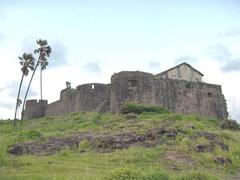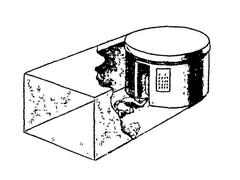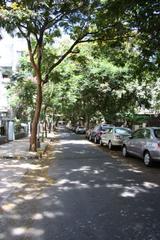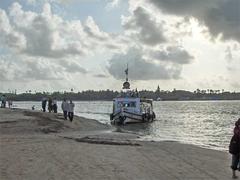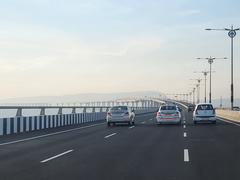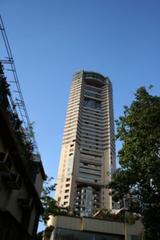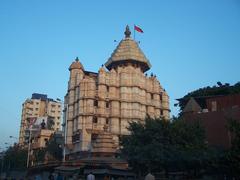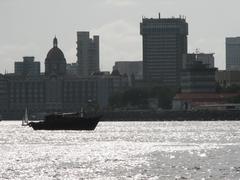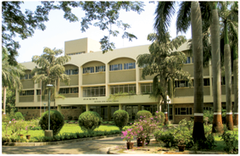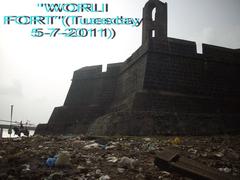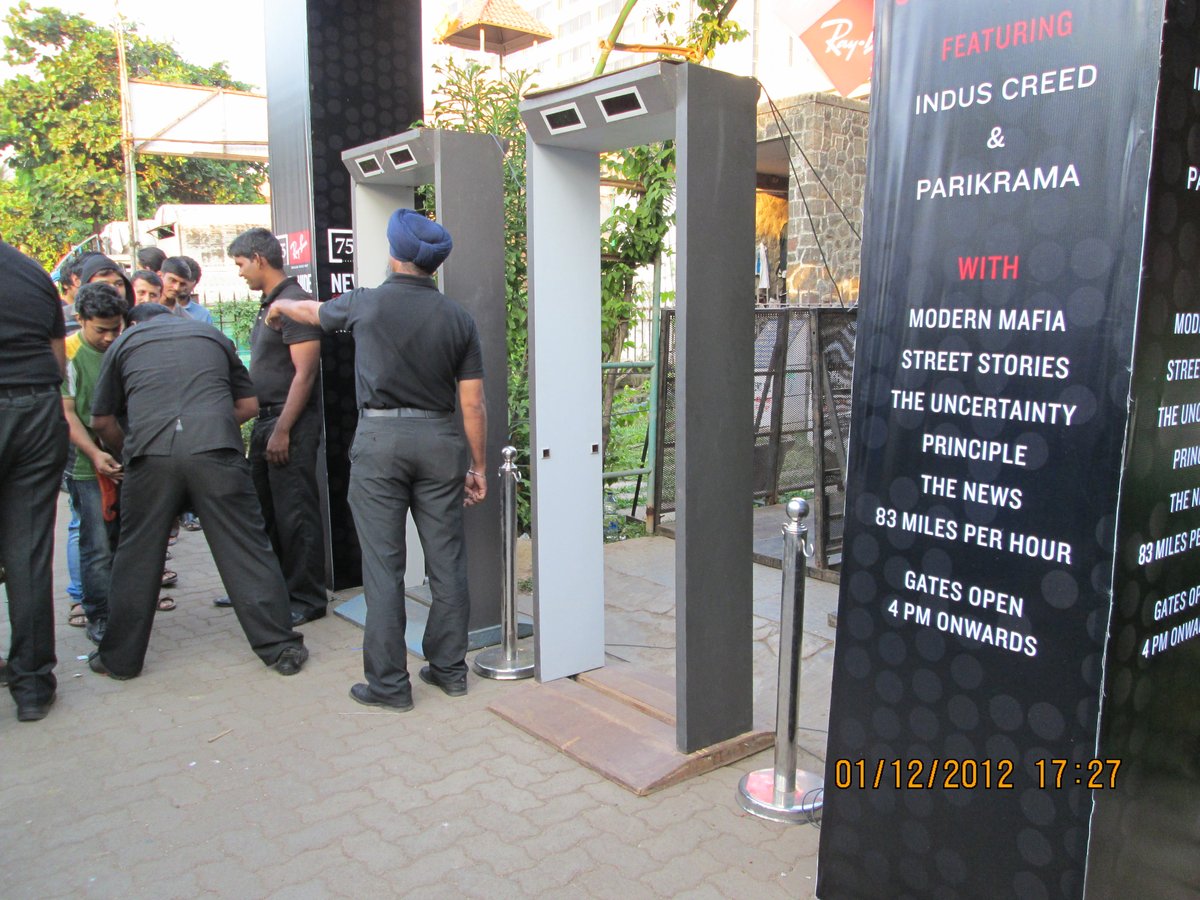
Castella de Aguada (Bandra Fort), Mumbai: Complete Visitor Guide
Date: 14/06/2025
Introduction
Bandra Fort, officially known as Castella de Aguada, stands as one of Mumbai’s most distinctive and historically significant landmarks. Perched at Land’s End in Bandra, this 17th-century Portuguese fortification has witnessed centuries of maritime activity and power struggles, serving as both a strategic defense outpost and a freshwater supply point for ships traversing the Arabian Sea. Today, Bandra Fort is celebrated for its panoramic coastal views, colonial architecture, and peaceful atmosphere—making it a must-visit for tourists, history enthusiasts, and locals seeking respite from the city’s bustle (Indianetzone, mumbaitourism.co.in, Knocksense).
This guide covers Bandra Fort’s history, architecture, visiting hours, ticketing, accessibility, travel tips, and nearby attractions—helping you plan a memorable and informed visit.
Table of Contents
- Background and Historical Significance
- Architectural Features and Strategic Importance
- Timeline: Portuguese, Maratha, and British Control
- Modern Restoration and Community Role
- Visitor Information
- Cultural Significance and Urban Identity
- Nearby Attractions
- Frequently Asked Questions (FAQs)
- Summary & Final Tips
- References
Background and Historical Significance
Bandra Fort was constructed by the Portuguese in 1640 as “Castella de Aguada” (“Fort of the Waterpoint”), referencing the vital freshwater spring within its compound. The fort’s principal purpose was to serve as a watchtower, defending Portuguese settlements and trade routes along India’s western coast. Its elevation—approximately 24 meters (79 feet) above sea level—offered commanding views of Mahim Bay, the Worli Islands, and the open Arabian Sea, critical for monitoring naval activity and deterring invasions (Indianetzone, Knocksense).
The fort was a vital link in a chain of coastal defenses, equipped with seven cannons and an array of smaller guns. As Mumbai evolved from a cluster of islands into a major commercial hub, Bandra Fort played a key role in its maritime history, transitioning through Portuguese, Maratha, and British control (mumbaitourism.co.in, homegrown.co.in).
Architectural Features and Strategic Importance
Design and Materials:
Bandra Fort is an outstanding example of 17th-century European military architecture, adapted to the Indian coastline. Constructed mainly from local granite, the fort features robust walls, arched gateways, and stone pathways. Embrasures along the ramparts were designed for cannon placement, ensuring wide arcs of fire for coastal defense.
Functional Layout:
Inside, the fort contains storage rooms, barracks, and lookout posts. A freshwater spring—critical for ships and residents—enhanced its strategic value. The fort’s pillared pathway, stone steps, and terraced design provide scenic vantage points with sweeping views of the Bandra-Worli Sea Link and Mumbai’s coastline.
Defensive Engineering:
The multi-level structure allowed defenders to monitor and repel threats from both land and sea. Unlike many Indian forts with ornate carvings, Bandra Fort emphasizes utility and resilience over decorative features.
Timeline: Portuguese, Maratha, and British Control
- Portuguese Era (1640–1739):
Built and maintained as a key maritime outpost, Bandra Fort was central to the defense of Portuguese interests in the region. - Maratha Rule (1739–1774):
The fort was captured by the Marathas following battles with the Portuguese. Its military potential was recognized by local rulers. - British Era (1774–19th Century):
The British took over after the First Anglo-Maratha War. To prevent its use by enemies, sections of the fort were deliberately demolished. In 1830, parts of the land were granted to philanthropist Byramjee Jeejeebhoy, further integrating the site into Mumbai’s civic landscape (Indianetzone, shivalikventures.com).
Modern Restoration and Community Role
After centuries of neglect and partial destruction, significant restoration efforts began in the early 2000s. The Bandra Bandstand Residents’ Trust and government agencies helped stabilize the structure, improve access, and introduce visitor amenities. Today, Bandra Fort is not only a preserved historical site but also a vibrant communal space, regularly hosting heritage walks, cultural events, and providing a tranquil retreat amid Mumbai’s urban sprawl (Knocksense, mumbaitourism.co.in).
Visitor Information
Visiting Hours
- Official Timings:
The fort is typically open daily from 6:00 AM to 6:30 PM. Some sources indicate public access may extend until 8:00 PM, but timings can vary for maintenance or special events. For the most current update, check with Mumbai Tourism or local authorities.
Entry Fees
- Admission:
Entry to Bandra Fort is free. There are no official ticket counters. Voluntary donations for preservation are welcome.
Accessibility
- Terrain:
The fort features stone steps, uneven surfaces, and sloped pathways. While recent improvements have made access easier, wheelchair users and those with mobility challenges may require assistance. - Nearby Promenade:
The adjacent Bandstand Promenade is more accessible and offers excellent sea views.
Directions
- By Train:
The nearest station is Bandra (Western Line). From there, it’s a 10–20 minute auto-rickshaw or taxi ride (approx. 3–4 km) (SceneLoc8). - By Bus/Auto:
BEST buses and auto-rickshaws ply regularly to Bandstand Promenade, a short walk from the fort. - By Car:
Limited parking is available near the entrance and along Bandstand Promenade; arrive early, especially on weekends.
On-Site Experience & Tips
- Amenities:
Basic restrooms, seating areas, and shaded spots are available. Carry your own water and snacks, as on-site options are limited. - Safety:
The area is generally safe with regular patrols; avoid isolated sections after dark and keep valuables secure. - Best Time to Visit:
November to February (cooler, clearer weather); early mornings or late afternoons for pleasant temperatures and optimal lighting.
Cultural Significance and Urban Identity
Bandra Fort is a living symbol of Mumbai’s multicultural legacy, representing layers of Portuguese, Maratha, and British influence. Its unique blend of colonial architecture and scenic beauty has made it a popular destination for film shoots, cultural events, and community gatherings. The fort’s proximity to Bollywood celebrity homes and its tranquil setting have also earned it the nickname “Lover’s Point” among locals.
Preservation initiatives by the Archaeological Survey of India and local heritage groups have ensured that Bandra Fort remains accessible and relevant, fostering cultural pride and community engagement (mumbaitourism.co.in).
Nearby Attractions
- Bandra Bandstand Promenade:
A scenic waterfront walkway with cafes, street food, and views of the sea link. - Mount Mary Church:
A historic basilica and popular pilgrimage site. - Bandra-Worli Sea Link:
Iconic cable-stayed bridge visible from the fort. - Bollywood Celebrity Homes:
Bandra is home to several film stars; guided walks often highlight the exteriors. - Local Cafes and Restaurants:
Numerous options nearby for refreshments or local cuisine.
Frequently Asked Questions (FAQs)
Q: What are Bandra Fort’s visiting hours?
A: Generally 6:00 AM to 6:30 PM daily; check local sources for updates.
Q: Is there an entry fee?
A: No, entry is free.
Q: Are guided tours available?
A: Occasional heritage walks and guided tours take place—check listings or with local operators.
Q: Is Bandra Fort accessible for people with mobility challenges?
A: Some areas are difficult due to steps and uneven ground; assistance is recommended.
Q: Can I do commercial photography or filming at the fort?
A: Yes, but commercial shoots require prior permission from municipal authorities.
Q: What is the best way to reach Bandra Fort?
A: By train (Bandra station), auto, taxi, or bus. Limited parking if driving.
Summary & Final Tips
Bandra Fort (Castella de Aguada) is a vital reminder of Mumbai’s maritime and colonial history, offering a blend of stunning views, unique architecture, and peaceful public space. Entry is free, and its proximity to Bandstand Promenade and Mount Mary Church makes it easy to combine with other local attractions. For the best experience, visit during cooler months, wear sturdy shoes, bring water, and respect the site’s preservation efforts.
Stay updated on events and heritage walks via official tourism channels. For a richer exploration of Mumbai’s historical sites and audio guides, download the Audiala app and follow Mumbai Tourism on social media (Indianetzone, mumbaitourism.co.in, Official Maharashtra Tourism).
References
- Indianetzone, Castella de Aguada History
- Knocksense, Overlooking the Arabian Sea Since 1640: Mumbai’s Bandra Fort is a Historical Gem
- mumbaitourism.co.in, Bandra Fort Mumbai
- Homegrown, Hidden History: The Forgotten Stories Behind 12 of Mumbai’s Forts
- Maharashtra Tourism, Official Maharashtra Tourism Website
- SceneLoc8, Bandra Fort
- shivalikventures.com, Bandra Fort & its Role in Mumbai Maritime History
